“The idea of the project was: how can we tell this in a way that is present tense?” asks The Zone of Interest director Jonathan Glazer. The filmmaker, speaking during a virtual press conference, reflects upon the contemporary resonance of The Zone of Interest. The film tells the story of Auschwitz Commandant Rudolph Höss, who devised a systematic killing machine that took over a million lives during the war. Glazer’s film, however, interprets history outside of Auschwitz’s walls. The Zone of Interest offers a domestic story of Höss and his wife, Hedwig (Sandra Hüller), as they enjoy their dream home next door to the camp.
It’s a chilling portrait in which the sense of normalcy makes the undertone of evil doubly sinister. The film is now an award season favourite with accolades that include three Golden Globe nominations including Best Picture and wins for Best Picture and Best Director from the Toronto Film Critics Association. It’s not the most conventional choice amid studio awards bait, but a testament to Glazer’s audacious artistic vision.
Glazer says that shifting the drama of Martin Amis’s book, which features a character inspired by Höss, lets audiences sees themselves in the story. “We could make a film that talks about something primordial, something [about] the human capacity for violence that we have as a species, and the familiarity of these perpetrators,” reflects Glazer. “They weren’t anomalies. They were normal people who step by step became mass murderers and became so disassociated from their crimes that they didn’t see them as crimes. The methods we used to make the film had to serve that idea of something that was a 21st century lens.”
Adapting Amis
Producer Jim Wilson adds that he and Glazer optioned Amis’s book in 2014 shortly after they collaborated on Under the Skin. The duo notes that they were already exploring a Holocaust story through an alternative lens and stumbled upon a preview of the book in the newspaper.
“What was captured in that preview was this perspective on the life of a concentration camp in the book,” observes Wilson. The producer echoes Glazer that Amis’s fictionalization of the commandant’s work and family life piqued their interest. “That is a 180 from the way that the Holocaust is traditionally narrated in culture, which is stories of its victims and the horror of the victims, and then the triumph of the human spirit.”
Glazer admits that prior to encountering The Zone of Interest, he struggled to find the framework for a perpetrator-based Holocaust story. “The novel almost gave me permission to take it on. It’s an extremely uncomfortable place to put oneself artistically, for obvious reasons, but there was something very courageous in Amis’s attempt. I think that helped me with mine, really,” says Glazer. The film adapts Amis’s novel quite radically. Where Amis’s book offers three storylines—one with the commandant puttering about his work, one with his protégé seducing his wife, and the other with a member of the Sonderkommando plotting his death—the film zeroes in on the domestic story. In stripping it back, though, Glazer gets to the heart of what makes the story’s exploration of the banality of evil so effective.

Responding to History
“I had a really powerful feeling from it and started to investigate the source text,” adds Glazer. “The fictional commandant that Martin Amis had written was based on the real commandant of Auschwitz, Rudolph Höss. As I started to read about the real man and, by extension, his wife and his family and his private world, the more I started moving towards the real history as opposed to the fictionalised version.”
Wilson says that this history-based approach was key to avoiding a “sacralization” of Holocaust stories that risk mythologizing it. “We were working with a German script editor in the early part of the development and he had a great criteria about the script that John had written,” notes Wilson. “He said, ‘Perhaps the question of this film is not how could these ordinary people do such terrible things, but how much like them are we?’ As John said, it’s about now. It’s about before these events. It’s hundreds of years of history.”
Glazer adds that this framing of the portrait ultimately helped sway actors like Friedel and Hüller, who were initially reluctant to play Nazis. “Both of them had a real, and rightly so, antipathy towards that because sometimes somebody just puts on an S.S. uniform and a hat, and it’s like cosplay,” says Glazer. “When I explained to them how I was going to do the film, they understood that there was no fetishization involved whatsoever. Quite the opposite. We shared the same doubts going into the project, and I think that’s actually what galvanised us all.”
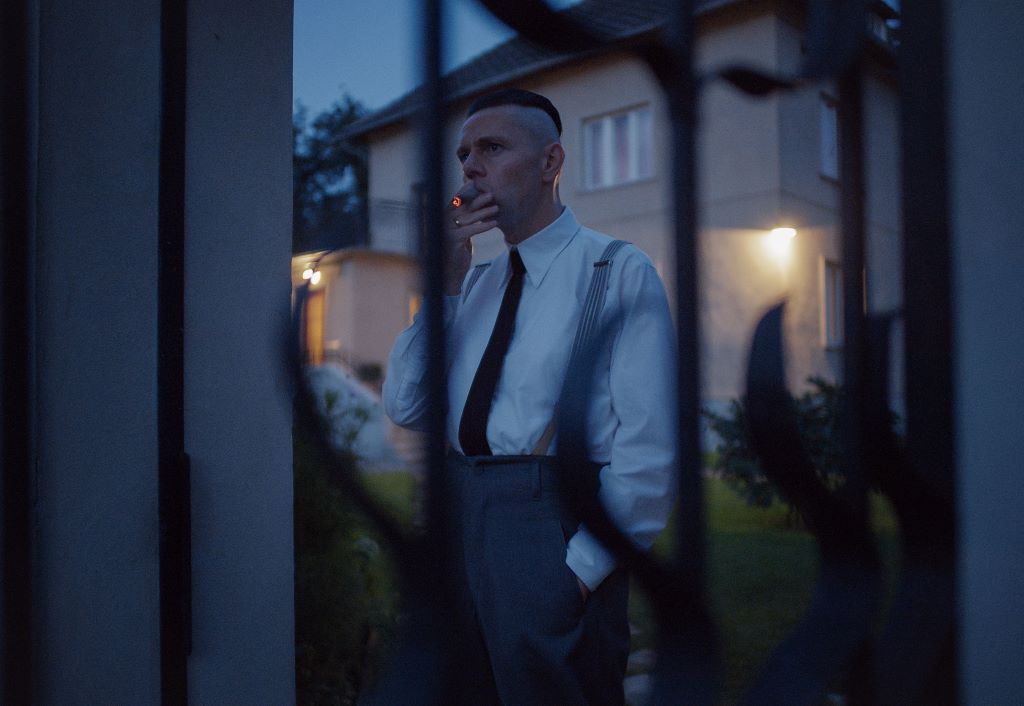
On Location
The director says that synergy extended to the crew as well during a powerful shoot on location at Auschwitz. “There were plenty of times when we would privately, or in groups, talk about our own journey where we had found ourselves,” says Glazer. “We weren’t in a movie studio a thousand miles away from these events. We were 50 metres from the walls of Auschwitz. There was undeniably a power and a focus that came with that proximity. I’m convinced that atmosphere is in every pixel of this film.”
While The Zone of Interest draws great power from its location, it boldly refuses to go inside the camp’s walls. Action unfolds in the Höss family yard and the surrounding area, an idyllic landscape of fields, streams, and verdant gardens. Only the sounds that punctuate the peaceful silence—screams, gunshots—remind viewers of the reality that the Höss and Hedwig deny.
“There was no desire from me whatsoever to recreate the atrocities visually with extras and actors,” explains Glazer. “The interpretive nature of sound can give us those pictures in our minds. We don’t need to re-enact them. The sound design needed to be, well, hell in a sense. It needed to represent the range of horrors and industry and confinement that one would expect to hear if one was in that garden.”
The Sights and Sounds of Auschwitz
The immersive soundscape comes thanks to meticulous work by sound designer Johnnie Burn. Glazer says that Burn and his team created the sounds of these horrors through extensive field recordings. “They’d walk the streets at night until they heard things that piqued their interest,” says Glazer. “There could be people in distress, or someone shouting for a taxi at three o’clock in the morning. But the quality of that sound is re-appropriated in this soundscape and it becomes real. Everything you are hearing is real, but it’s re-appropriated. We work with sound the way we work with pictures. It’s as rigorous and as thorough as the picture edit.”

For the film’s striking visuals—cold, austere, and unsentimental views of Höss’s world—Glazer says that he and cinematographer Lukasz Zal (Cold War) favoured natural light. Glazer observes that only one scene used artificial lighting: a haunting shot in which Hedwig’s mother becomes bathed in the glow of fires emanating from Auschwitz’s incinerator as she finally deduces what’s happening on the other side of the wall. The shock of colour accentuates the weight of her awakening.
Notes of Hope
Moreover, the challenge to use natural light injects The Zone of Interest with its most haunting yet hopeful moments. Select sequences depict Alexandra, a young Polish woman who works for Hedwig, escaping into the night to leave food for prisoners. The sequences appear via thermal cinematography with the warmth of the fruit that Alexandra leaves peppering the fields with notes of hope.
Glazer says that the emphasis on natural light partly works to “serve the authenticity” of the story, but also to avoid “fetishization or glamorization” in a Holocaust tale. “You are left with a simple question of [how] to shoot a girl in 1943 in a field where there isn’t enough ambient light to see her,” explains Glazer. “Then you research the available thermal imaging technology, which leads you to a camera system, which then is redeveloped by the geniuses I’m very fortunate enough to work with until we see a picture that could bring the temperatures of everything from the girl and the rocks that she’s walking on to the foreground. That grey scale was really about serving this idea of the 21st century lens.”
Glazer, however, says that despite all the horrors implied within The Zone of Interest, the film ultimately invite hope by calling upon humans’ ability to change. “I think we have to evolve out of our capacity for violence in thought and in action,” he observes. “I refuse to believe that we can’t evolve out of it,” observes Glazer. “The film is about the possibility each of us being a perpetrator, what we choose to love, who we choose to love, who we choose to empathise with and who we decide not to. It’s a very complex circumstance, but I think, fundamentally, it is an interior examination.”


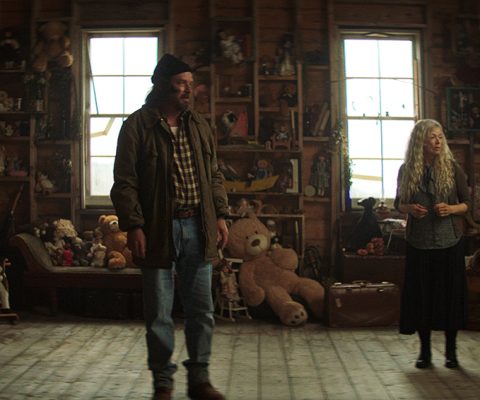
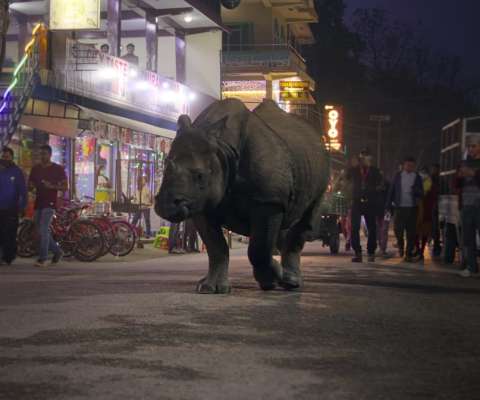
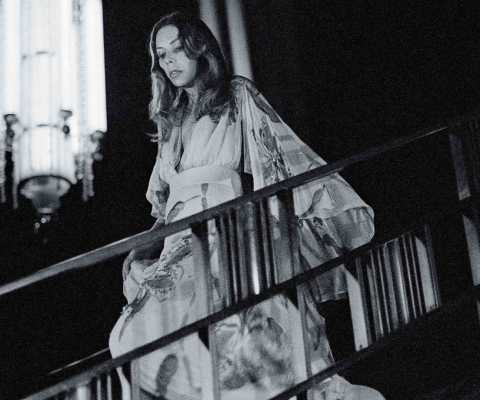
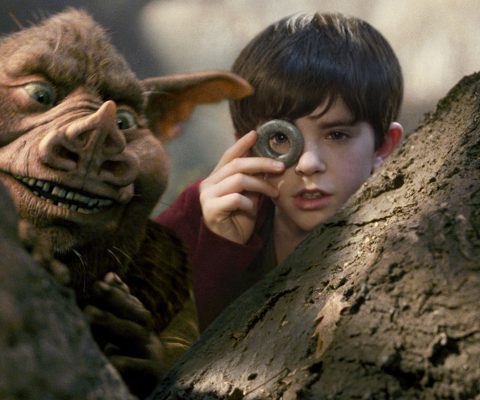
Comments